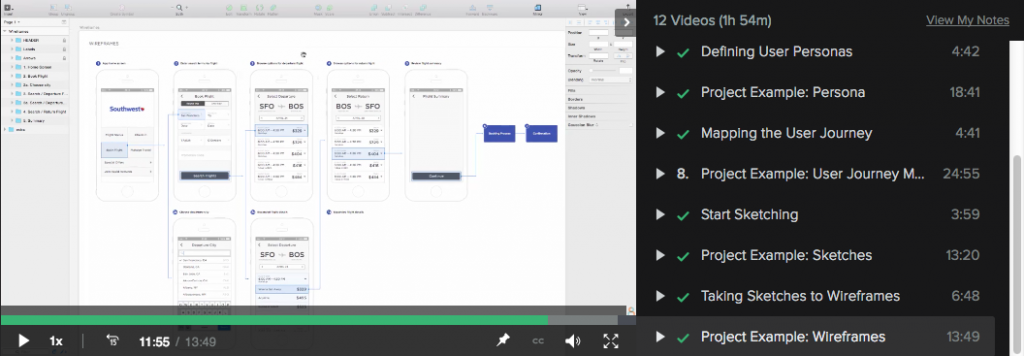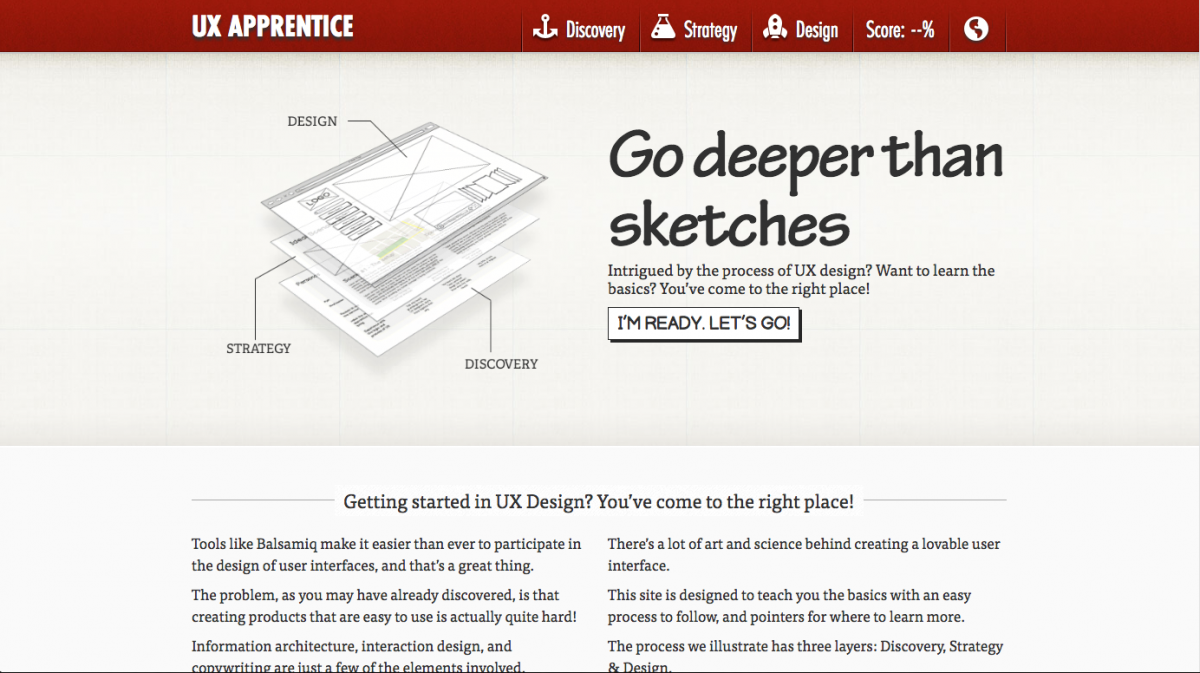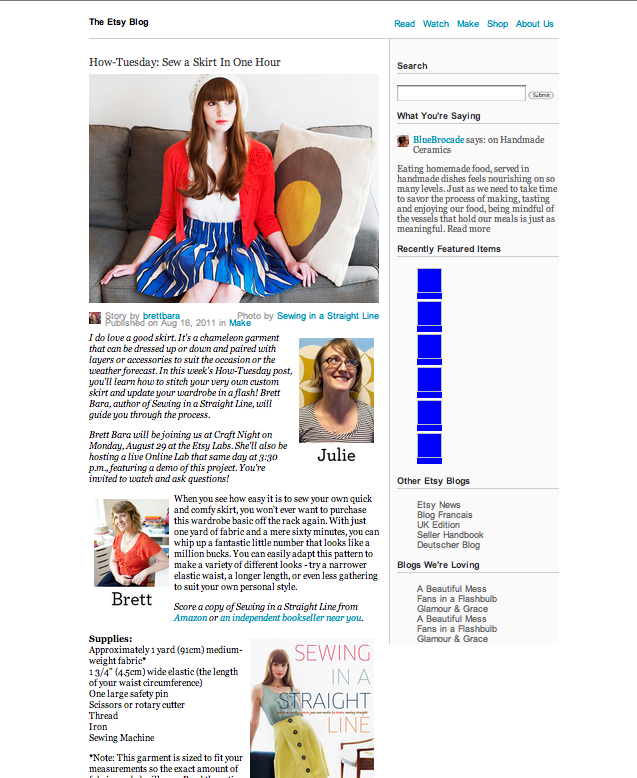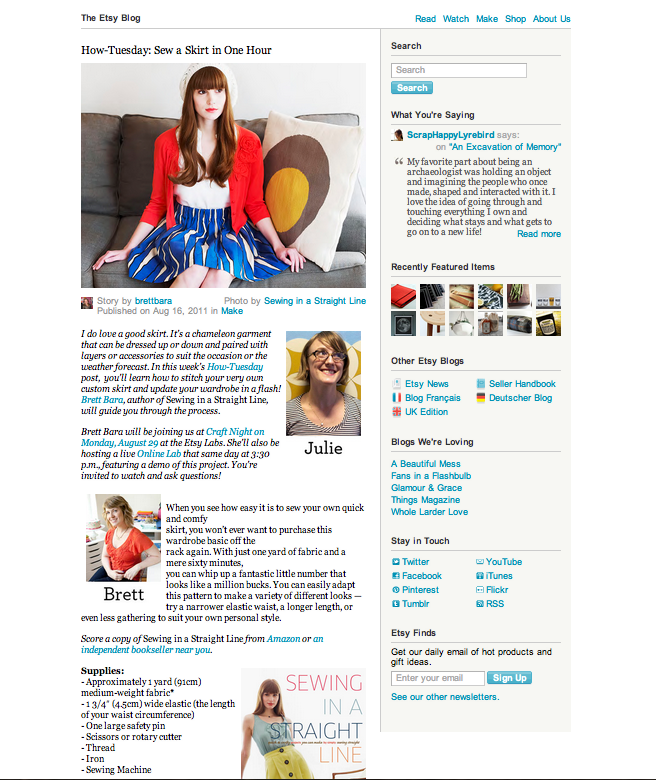Following up my earlier posts about online resources that teach the fundamentals of UX, here is a review of a few video courses. There are a lot of good websites and “schools” that specialize in video-based learning. The courses I’m reviewing today are from Lynda and Skillshare.
Overview
Lynda offers classes on many creative topics. Topics include web design, graphic design, programming, music composition, and more. It’s a great site to use to get structured overview of a topic. For instance, if you want to learn the basics of After Effects, Lynda would be a good source. It’s been around for a while, but somehow many of their courses still seem relevant. Lynda offers a consistent site experience with high production quality. Sometimes it can seem like their courses are out of date.
Skillshare also offers classes on creative topics. I haven’t checked, but they seem to have a few more lettering courses. The service is new and they don’t have as much content as Lynda. Skillshare emphasizes the teachers over the subjects. Teachers sign up to teach classes; they do their own recording and supply site the content. The result is that the site experience is inconsistent. Some classes are good, but have low production quality. But since it seems like a startup, the content feels more “fresh”.
Membership
Lynda is by paid membership only, although you can get a free trial for 10 days. They have paid plans for individual members and organizations, that start at around $25/month. But, many public libraries will let their patrons sign up for free Lynda memberships. Check with your local library to see if they offer this, and if they do you’re all set. If not, you can still sign up with Lynda by getting a library card with another city. Although the rules for out-of-town library cards depends on each library.
Skillshare requires site registration, but it has both free and paid accounts. The paid accounts are “premium” accounts which opens up “premium” classes. I was able to find a 3-month coupon for Skillshare which allowed me to take a few premium classes. I am not confident in recommending a premium account, though. I am not convinced premium classes are “better” than non-premium. Unfortunately, Skillshare is still too inconsistent for me to recommend a premium account.
Teaching style
If it hasn’t become obvious yet, I am a Lynda. I prefer the Lynda teaching style, for a few reasons. One reason is that each instructor is very rehearsed before they record their lesson. The result is a smooth lesson with instructors that speak with clarity about their topic. Lessons are well-organized and logical, with the course description listing class topics.
Some Skillshare instructors are well-rehearsed but many others are not. Even having an organized instructor doesn’t always result in a good class. One pet peeve of mine is the poor audio quality for most Skillshare lessons. Lynda classes sound high-end. I suspect they are either recorded in a sound studio or with a good microphone on a set. In comparison, Skillshare instructors sound amateur, recorded at home or with inferior microphones. You may find yourself adjusting the sound level between lessons. The course descriptions are pretty good, but they could be better with a list of the class topics.
Relevant classes
Finally, the relevant classes! Remember, the classes I am reviewing fit the pattern of being either a what is UX class or a how to UX class. That’s what I’ll go through next with Lynda and Skillshare.
Lynda
What is UX
Interaction Design Fundamentals with David Hogue provides an overview of interaction design. What I liked about this class was that it described theory and application. For instance, there was a lesson on tools, and then another lesson on UX principles. Course topics included cognition, neural models, and vision. They even mentioned cognitive load! I definitely recommend this 3-hour class.

How to UX
UX Design Techniques, from instructor Chris Nodder, is all about how to do UX. This is actually a set of 7 videos, that go from user analysis to implementation. Topics include observation and experience mapping. Techniques include as personas, scenarios, storyboards, and paper prototyping. Each lesson builds on the previous one. There’s a UX playlist that only includes 6 courses, so make sure to include this one if you decide to take this course, too.

I enjoyed this class a lot. I became a fan of the method he describes. It seems fun to create paper prototypes. My only hesitation with this method is that it might be difficult for teams of one. It also focused on building a new product. I find that I get involved in many redesigns of existing products.
Skillshare
On Skillshare, there are again two sets classes I want to mention focused on what is UX and how to UX.
What is UX
The What is UX class is UX Design Fundamentals: Everything You Need to Know (and More) by Joe Natoli. The description for this premium class states that it is a comprehensive overview on UX. This is a 12-hour, 8 chapter course. Each video is between 8-15 minutes long.
I’m not against long classes, and 12 hours sounds like you’re getting your money’s worth. Yet…I couldn’t finish the course. Despite this instructor being well-organized, he has a speaking style that is too hard to follow. His style is too loose and casual. He has a tendency to interject rhetorical jokes and questions. And he makes statements that only serve to confirm his own points, such as below:
Paths on the other hand are what users leave to enter and leave. (pause) Ok? Pretty straightforward.
“Ok? Pretty straightforward” may not sound like much. But, it’s pretty noticeable when happens in every other sentence.
I also noticed that the slides don’t always match the voiceover. I felt that I was constantly fighting a cognitive disconnect between what I was seeing and what I was hearing.
To summarize, I do not recommend this class. It’s far too long and his speaking style will drive you nuts. In lieu of a screenshot from the course, I will include this Placekitten.
How to UX
iOS Design by Kara Hoedecker is a good hands-on course in UX design. This is a three-part course on redesigning a mobile app.
She takes the class from planning stages and sketching, through wireframes and visual design. She ends with prototyping and testing. Her class wasn’t perfect: she had some technical issues with her class. For instance, her cat walking into the room where she was recording was pretty cute. Her longest class is almost 2 hours; the shortest is a little over 30 min.

What I liked about this class was how she went through the class. First, she presented the idea and what the final outcome should be. Then she went through the exercise herself, showing how she did the work. This was important for me because when I watched her going over her work, I felt very confident that I could do the work, too. I was so confident, I ended up doing my own project. (I’ll post my work in a separate post since this one has become so long.)
She also emphasized sketching a bit more so than I’ve done in the past. Her course includes visual design, so it expands the definition of UX to a wider range of skills than is typically associated with UX.
Conclusion
If you like video-based learning, Lynda and Skillshare both offer courses on UX theory and techniques. My conclusion is that Lynda is more consistent overall. Skillshare has some good resources, but it’s a little hit or miss without a premium account. As for what I learned, I liked the sense of accomplishment I had completing the Skillshare course. There were a few techniques from each course that I look forward to using soon, such as the sticky-note experience mapping or group ideation sessions from the Lynda course. I also hope to use sketching more than usual, and I will start taking on UI design tasks. A combination the techniques used in each class would be beneficial in any UX practice.
I look forward to posting my work from the Skillshare class, in an upcoming post. In the meantime, here’s a bonus video about Building and Maintaining Your UX Design Portfolio, from Lynda.




